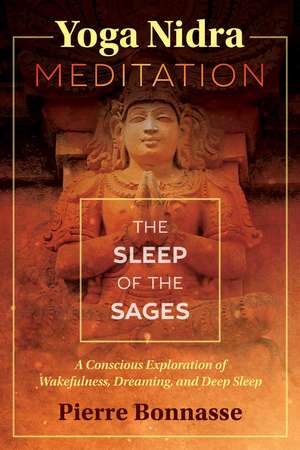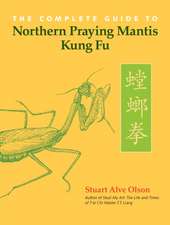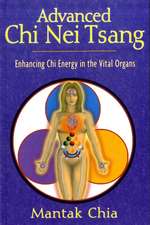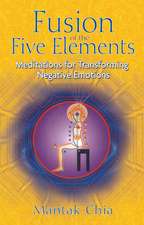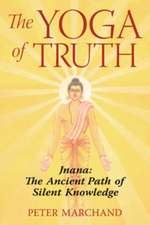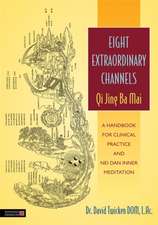Yoga Nidra Meditation: The Sleep of the Sages
Autor Pierre Bonnasseen Limba Engleză Paperback – 13 dec 2017
A practice to consciously explore wakefulness, dreaming, deep sleep, and the very structure of your emotional, mental, and energy bodies
• Details the simple postures of Yoga Nidra, breathing exercises and guided meditations, and tips for maintaining awareness in the liminal state that precedes sleep
• Includes four complete sessions as well as pointers for creating your own sessions
Known as the “yoga of conscious sleep,” Yoga Nidra is an ancient Indian practice that allows you to consciously explore the states of wakefulness, dream, and deep sleep as well as your own psyche by combining deep relaxation with attentive awareness. Through Yoga Nidra you can directly observe and understand specific physiological, emotional, and mental processes within yourself as well as experience moments of great inner tranquility, joy, and well-being.
Providing a step-by-step guide to Yoga Nidra, Pierre Bonnasse details the simple postures of Yoga Nidra and includes preparatory techniques that work with breath and guided meditations to help you become an attuned observer of your inner world. Offering tips for withdrawing the senses and maintaining awareness in the liminal state that precedes sleep, the author explores how all practices in this discipline begin with a phase of relaxation and observation of breathing, followed by immersion into a very subtle awareness of the physical, energy, and mental bodies. The higher states of more advanced sessions focus on the energy body and its components: the chakras, nadis, and pranavayu, the vital breath and autonomic functions of the body.
Including four complete sessions as well as pointers for creating your own, Bonnasse shows how Yoga Nidra offers stabilizing, and therapeutic effects for the body, emotions, and thoughts. Connecting Indian and Western philosophical ideas, the author shows how sleep can be an opportunity to practice a form of yoga that changes not only our nights but every minute of our days.
• Details the simple postures of Yoga Nidra, breathing exercises and guided meditations, and tips for maintaining awareness in the liminal state that precedes sleep
• Includes four complete sessions as well as pointers for creating your own sessions
Known as the “yoga of conscious sleep,” Yoga Nidra is an ancient Indian practice that allows you to consciously explore the states of wakefulness, dream, and deep sleep as well as your own psyche by combining deep relaxation with attentive awareness. Through Yoga Nidra you can directly observe and understand specific physiological, emotional, and mental processes within yourself as well as experience moments of great inner tranquility, joy, and well-being.
Providing a step-by-step guide to Yoga Nidra, Pierre Bonnasse details the simple postures of Yoga Nidra and includes preparatory techniques that work with breath and guided meditations to help you become an attuned observer of your inner world. Offering tips for withdrawing the senses and maintaining awareness in the liminal state that precedes sleep, the author explores how all practices in this discipline begin with a phase of relaxation and observation of breathing, followed by immersion into a very subtle awareness of the physical, energy, and mental bodies. The higher states of more advanced sessions focus on the energy body and its components: the chakras, nadis, and pranavayu, the vital breath and autonomic functions of the body.
Including four complete sessions as well as pointers for creating your own, Bonnasse shows how Yoga Nidra offers stabilizing, and therapeutic effects for the body, emotions, and thoughts. Connecting Indian and Western philosophical ideas, the author shows how sleep can be an opportunity to practice a form of yoga that changes not only our nights but every minute of our days.
Preț: 87.80 lei
Nou
Puncte Express: 132
Preț estimativ în valută:
16.80€ • 17.48$ • 13.87£
16.80€ • 17.48$ • 13.87£
Carte disponibilă
Livrare economică 24 martie-07 aprilie
Livrare express 07-13 martie pentru 19.34 lei
Preluare comenzi: 021 569.72.76
Specificații
ISBN-13: 9781620556771
ISBN-10: 1620556774
Pagini: 160
Dimensiuni: 152 x 229 x 10 mm
Greutate: 0.23 kg
Editura: Inner Traditions/Bear & Company
Colecția Inner Traditions
ISBN-10: 1620556774
Pagini: 160
Dimensiuni: 152 x 229 x 10 mm
Greutate: 0.23 kg
Editura: Inner Traditions/Bear & Company
Colecția Inner Traditions
Notă biografică
Pierre Bonnasse, also known as Chitragupta, has studied under the guidance of different spiritual masters for more than 20 years. The author of more than 20 books, he cofounded the Rishi Yoga Shala School, offering yoga training programs in India and in France. He lives in both France and Rishikesh, India.
Extras
Part II
The Practice of Yoga Nidra
The Ultimate Surrender
“It is necessary to be awake all day long, in order to sleep well,” Nietzsche wrote in Thus Spake Zarathustra. In the context of Yoga Nidra, this affirmation takes on a new meaning and is a teaching of great importance. And we can also add that it is up to us to sleep well at night, in order to be truly awake.
Yoga Nidra thus offers a path of relaxation, inner knowledge, discharge, regeneration, and opening up to spaces free of suffering, be it in wakefulness, in life, in sleep, or in death. By invading the unawareness at the source of all conditioning, Yoga Nidra allows for a new outlook on the world, on others, and on oneself, an outlook that is more peaceful. With regular training on a daily basis, the practices fall into place on their own, even at night. Everything is clear and luminous. A new flavor that changes life, our way of knowing ourselves and of being. The philosophy is essentially practical. The knowing and the being are reunited in a harmonious, benevolent, and nourishing dance. The map is not the territory, but allows us to move forward on the path, to lose ourselves then to find ourselves; it lets us be seized by what is neither lost nor found.
I can relax without practicing Yoga Nidra, but I cannot practice Yoga Nidra without being relaxed, just as in meditation. In wakefulness, the relaxation essentially operates on the level of the physical body and its tissues. If I am not relaxed and am completely tensed, it is impossible to be aware of the profound structures and of the energy that circulates in them, neither during the day nor at night. Whereas, in the practice of conscious sleep, the deeper the relaxation, the more available and open I become. Even though it is only a preparatory phase, it is still very important, because perceiving the tensions allows me to let go of them and awaken to a space of consciousness that is ever peaceful and tensionless. The different processes are observed peacefully. The transition and intervals are observed and the enquiry continues: Who am I? Sensations appear and disappear inside me, so I am not this tensed or relaxed body, healthy or sick. Emotions appear and disappear in me, I am thus not these changing emotions. Thoughts appear and disappear in me, I am thus not these thoughts. To whom do these thoughts appear? The only possible answer would be “I AM.” In the light of this witnessing-presence, the ego, the “I thought” suddenly appears to be a simple tension of the mind, the crystallization of a thought that belongs to no one, a knot that lacks firmness, and a contraction that no longer exists once it is released, as in the heart of deep sleep, meditation, or “conscious sleep.” But it is necessary to remain alert because the states are changing and the tensions may come back, without me noticing them.
With practice, Yoga Nidra--as a reality and not as a means--reveals itself to be the ever peaceful background of all my activities and all my experiences. Conscious or unconscious, being or not being, tensed or relaxed, asleep or awake, all these dualities end up dissolving into that which is neither this nor that. No form of yoga, as a technique or a practice can allow me to realize the Self, because realizing the Self is not an action. Yoga Nidra, on the other hand, can make me available to such a discovery by familiarizing me with the non-Self and awakening me to a different quality of listening. Through the total commitment and conscious effort that are required against the mechanical manifestations of my person, it produces the friction through which non-effort sets in, like a transparent and clear truth, vibrant and luminous all at once. When all concepts are dissolved, the yogi is thus effaced in the transparent benevolence of his true nature that is the same Consciousness in all of us, the unique underlying Force in each one of our multiple eccentricities, and the Life at work in each one of our cells. As in all traditional paths, Yoga Nidra invites us to realize, by simple observation, that we are not the bulb, but the electricity, and that the electricity is the same in each bulb, and moreover, that electricity does not die when the bulb goes out.
But, as soon as there is light, the bulb easily tends to think that the current comes from it and that it is producing the light. I must be very alert to not get caught up in the illusion of the “me” that latches on and gives itself credit for everything, if it reappears. If I can experience the peace, the silence, and the void, it means that I am still beyond this sensation or feeling. However, one must not be deluded by a false sense of liberation and be fooled by such periods of silence and thought. On the contrary, it is at this moment that one must become alert again, and look inside with a lot of attention to realize who experiences this silence. For there is no beginning and no end to the silence of the Self, which never changes. Only thoughts appear and disappear. It is not enough to simply stop thoughts in order to be free; it is absolutely necessary to recognize their source.
Lastly, Yoga Nidra is not a technique to be practiced, a method to learn, a faculty to develop, an intention, an experience, a state, or a goal to accomplish. Yoga Nidra is simply recognizing what I have always been, even before knowing that “I am.”
The Practice of Yoga Nidra
The Ultimate Surrender
“It is necessary to be awake all day long, in order to sleep well,” Nietzsche wrote in Thus Spake Zarathustra. In the context of Yoga Nidra, this affirmation takes on a new meaning and is a teaching of great importance. And we can also add that it is up to us to sleep well at night, in order to be truly awake.
Yoga Nidra thus offers a path of relaxation, inner knowledge, discharge, regeneration, and opening up to spaces free of suffering, be it in wakefulness, in life, in sleep, or in death. By invading the unawareness at the source of all conditioning, Yoga Nidra allows for a new outlook on the world, on others, and on oneself, an outlook that is more peaceful. With regular training on a daily basis, the practices fall into place on their own, even at night. Everything is clear and luminous. A new flavor that changes life, our way of knowing ourselves and of being. The philosophy is essentially practical. The knowing and the being are reunited in a harmonious, benevolent, and nourishing dance. The map is not the territory, but allows us to move forward on the path, to lose ourselves then to find ourselves; it lets us be seized by what is neither lost nor found.
I can relax without practicing Yoga Nidra, but I cannot practice Yoga Nidra without being relaxed, just as in meditation. In wakefulness, the relaxation essentially operates on the level of the physical body and its tissues. If I am not relaxed and am completely tensed, it is impossible to be aware of the profound structures and of the energy that circulates in them, neither during the day nor at night. Whereas, in the practice of conscious sleep, the deeper the relaxation, the more available and open I become. Even though it is only a preparatory phase, it is still very important, because perceiving the tensions allows me to let go of them and awaken to a space of consciousness that is ever peaceful and tensionless. The different processes are observed peacefully. The transition and intervals are observed and the enquiry continues: Who am I? Sensations appear and disappear inside me, so I am not this tensed or relaxed body, healthy or sick. Emotions appear and disappear in me, I am thus not these changing emotions. Thoughts appear and disappear in me, I am thus not these thoughts. To whom do these thoughts appear? The only possible answer would be “I AM.” In the light of this witnessing-presence, the ego, the “I thought” suddenly appears to be a simple tension of the mind, the crystallization of a thought that belongs to no one, a knot that lacks firmness, and a contraction that no longer exists once it is released, as in the heart of deep sleep, meditation, or “conscious sleep.” But it is necessary to remain alert because the states are changing and the tensions may come back, without me noticing them.
With practice, Yoga Nidra--as a reality and not as a means--reveals itself to be the ever peaceful background of all my activities and all my experiences. Conscious or unconscious, being or not being, tensed or relaxed, asleep or awake, all these dualities end up dissolving into that which is neither this nor that. No form of yoga, as a technique or a practice can allow me to realize the Self, because realizing the Self is not an action. Yoga Nidra, on the other hand, can make me available to such a discovery by familiarizing me with the non-Self and awakening me to a different quality of listening. Through the total commitment and conscious effort that are required against the mechanical manifestations of my person, it produces the friction through which non-effort sets in, like a transparent and clear truth, vibrant and luminous all at once. When all concepts are dissolved, the yogi is thus effaced in the transparent benevolence of his true nature that is the same Consciousness in all of us, the unique underlying Force in each one of our multiple eccentricities, and the Life at work in each one of our cells. As in all traditional paths, Yoga Nidra invites us to realize, by simple observation, that we are not the bulb, but the electricity, and that the electricity is the same in each bulb, and moreover, that electricity does not die when the bulb goes out.
But, as soon as there is light, the bulb easily tends to think that the current comes from it and that it is producing the light. I must be very alert to not get caught up in the illusion of the “me” that latches on and gives itself credit for everything, if it reappears. If I can experience the peace, the silence, and the void, it means that I am still beyond this sensation or feeling. However, one must not be deluded by a false sense of liberation and be fooled by such periods of silence and thought. On the contrary, it is at this moment that one must become alert again, and look inside with a lot of attention to realize who experiences this silence. For there is no beginning and no end to the silence of the Self, which never changes. Only thoughts appear and disappear. It is not enough to simply stop thoughts in order to be free; it is absolutely necessary to recognize their source.
Lastly, Yoga Nidra is not a technique to be practiced, a method to learn, a faculty to develop, an intention, an experience, a state, or a goal to accomplish. Yoga Nidra is simply recognizing what I have always been, even before knowing that “I am.”
Cuprins
PREFACE
Yoga Nidra: A Journey into the States of Matter, Consciousness, and the Joy of Being
INTRODUCTION Indian Philosophy and the Limbs and Paths of Yoga
PART I
The Philosophy of Yoga Nidra
The Origins of Yoga Nidra
States of Consciousness
Who Am I?
The Sheaths of the Being
Awareness, Energy, Elements, and States of Matter
Qualities of Sleep
An Approach to Indian Psychology
The Manifestation of Phenomena
The Energy System in Yoga
The Phenomenal World and Constructions of the Mind
The Unconscious Mind
Fears, Desires, and Suffering
Sleep and Death
PART II
The Practice of Yoga Nidra
Yoga Nidra as a Practice
The Limbs of Yoga According to the Nidra Tradition
Preparatory Exercises
Exercises for Falling Asleep
Exercises for the Night
Exercises for Waking Up
Yoga of Dreams--Svapna Yoga
Protocol for Yoga Nidra
The Art of Living in Total Awareness
Fields of Application for Yoga Nidra
The Ultimate Surrender
PART III
Putting Yoga Nidra into Practice
Four Practice Sessions Micro-Practices
Session 1: Blue Star (Nilatara Yoga Nidra)
Session 2: Contemplation of the Elements (Mahabhuta Visarga Yoga Nidra)
Session 3: From the Sound AUM to Non-contact (Pranava Asparsha Yoga Nidra)
Session 4: The Art of Dying (Marana Yoga Nidra)
Practices to Inspire and Create Your Sessions
APPENDIX “The Taste of Yogic Sleep”: An Interview with Pierre Bonnasse
Notes
Suggested Readings
Index
Yoga Nidra: A Journey into the States of Matter, Consciousness, and the Joy of Being
INTRODUCTION Indian Philosophy and the Limbs and Paths of Yoga
PART I
The Philosophy of Yoga Nidra
The Origins of Yoga Nidra
States of Consciousness
Who Am I?
The Sheaths of the Being
Awareness, Energy, Elements, and States of Matter
Qualities of Sleep
An Approach to Indian Psychology
The Manifestation of Phenomena
The Energy System in Yoga
The Phenomenal World and Constructions of the Mind
The Unconscious Mind
Fears, Desires, and Suffering
Sleep and Death
PART II
The Practice of Yoga Nidra
Yoga Nidra as a Practice
The Limbs of Yoga According to the Nidra Tradition
Preparatory Exercises
Exercises for Falling Asleep
Exercises for the Night
Exercises for Waking Up
Yoga of Dreams--Svapna Yoga
Protocol for Yoga Nidra
The Art of Living in Total Awareness
Fields of Application for Yoga Nidra
The Ultimate Surrender
PART III
Putting Yoga Nidra into Practice
Four Practice Sessions Micro-Practices
Session 1: Blue Star (Nilatara Yoga Nidra)
Session 2: Contemplation of the Elements (Mahabhuta Visarga Yoga Nidra)
Session 3: From the Sound AUM to Non-contact (Pranava Asparsha Yoga Nidra)
Session 4: The Art of Dying (Marana Yoga Nidra)
Practices to Inspire and Create Your Sessions
APPENDIX “The Taste of Yogic Sleep”: An Interview with Pierre Bonnasse
Notes
Suggested Readings
Index
Recenzii
“Pierre Bonnasse’s Yoga Nidra Meditation is no glib self-help book about using modern yoga nidra--the practice of visualizing images, having awareness of breath, and remaining immobile while in a lucid, sleep-like state--for getting rid of stress and anxiety. It is, instead, an in-depth, wise, and elegantly written presentation of the philosophy and practice of modern yoga nidra as nothing less than a means of attaining a ‘taste of Being’ of Brahman. In this, the book itself is a kind of meditation--the kind that one may read at bedtime in order to facilitate slipping into sleep.”
“Yoga Nidra Meditation: The Sleep of the Sages is as much about waking up as it is about sleeping. Bonnasse shows us how to wake up from the sleepy dreams that dull our consciousness and keep our natural enlightened state concealed. He tells us that to go beyond the body into our awakened state, first we have to go into the body, awakening its sensations and breath. The awakened state of the body then becomes the river that takes us beyond our limited sense of self. This is an important message, beautifully expressed, and the author offers powerful, yet simple, instructions on entering the state of yoga nidra for ourselves.”
“Yoga Nidra Meditation: The Sleep of the Sages is as much about waking up as it is about sleeping. Bonnasse shows us how to wake up from the sleepy dreams that dull our consciousness and keep our natural enlightened state concealed. He tells us that to go beyond the body into our awakened state, first we have to go into the body, awakening its sensations and breath. The awakened state of the body then becomes the river that takes us beyond our limited sense of self. This is an important message, beautifully expressed, and the author offers powerful, yet simple, instructions on entering the state of yoga nidra for ourselves.”
Descriere
A practice to consciously explore wakefulness, dreaming, deep sleep, and the very structure of your emotional, mental, and energy bodies
